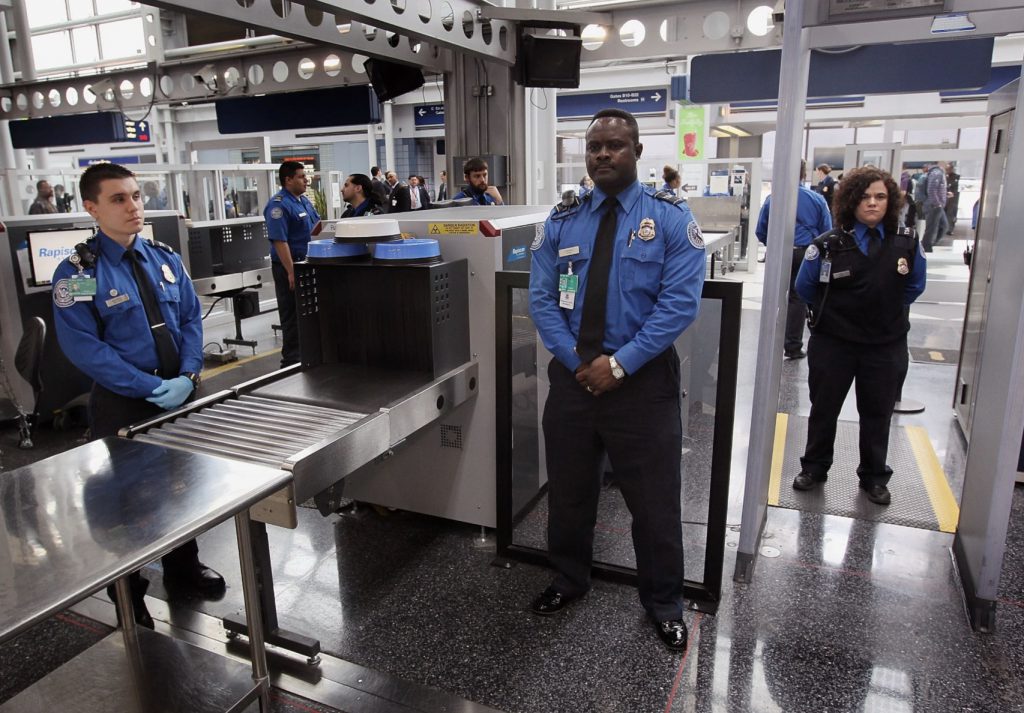Discrimination By Racial Profiling: Law Enforcement Needs A New Vision
Currently, there is a fundamental need for law enforcement to revise its basic standard by which to evaluate potentially harmful threats. Such a standard should use the analysis of negative behaviors rather than discrimination by racial profiling.
The need for a method to screen individuals, while minimally utilized prior to September 11, 2001, was made apparent when the Twin Towers fell. Enemies were made, suspicions were at all-time highs, and security measures for protecting the innocent were changed forever. This change was quite a necessity at the time, and it involved discrimination by racial profiling at air travel and transportation venues, secret and public ostracizing of religious groups, and identification of “threatening” physical characteristics of individuals. Those measures implemented in 2001 are still being used today in 2020, even though they are dated and inefficient.

Technology Has Blessed And Cursed Enforcement Efforts
The plethora of human rights’ violations and movements has creates a culture that does not allow for mistakes by anyone, at any time. Even behind closed doors, law enforcement is scrutinized by the public eye. The influx of social media, public media, and availability of information immediately accessible via the internet, cell phones, body cameras, security cameras, and other technological resources has been both a blessing and a curse to those officers that work in the public’s view.
Random Checkpoints Are More Effective Than Discrimination By Racial Profiling
Individuals and groups that have the intent to harm others have become smarter and more elusive. This calls for a more in-depth analysis of demographic study of individuals associated with terroristic organizations. However, considering the ineffectiveness of using certain traits (for example, curly haired males versus balding or straight-haired males, the potential terrorist would have the opportunity to make it through several checkpoints in airport security. (Press, 2010).
Additionally, Press further states that random selection of individuals on a consistent statistical basis is proven mathematically to be more effective than discrimination by strong profiling measures. By implementing this method alone, security measures are far more likely to be successful in identification of terroristic threats by randomized, methodical, mathematical screening processes in high-security locations rather than identifying individuals with certain physical characteristics. However for obvious reasons, instincts and observations should still take precedence in these situations based on common sense and training; if an individual looks or acts suspicious and gives reasonable cause for investigation of motives, then the investigation should be performed appropriately regardless of the protocols of randomized screening.
Subjective Judgments By Law Enforcement Leads To Inconsistencies
Moral ambiguity and ethical reasoning are widely varied throughout the world based on the individual law enforcement officer, their previous interactions with individuals throughout their lifetime, and the typical behaviors of repeat offenders for racially motivated prejudices. Statistically in the United States, there is a disproportionate emphasis on data, basing inferences about relating one specific race to statistical criminal involvement within serious offender populations (Piquero, 2008). If analysis were based on data and data alone, one might think that African Americans are more heavily involved in crime in the states, as well as the observation that Hispanics and African American males having a stronger likelihood of being arrested and incarcerated than Caucasian males. However, in 2004, “other” ethnic backgrounds were most likely to be stopped and searched, with a likelihood of a 47% increase as compared to a 38% increased likelihood of African Americans; Asians increased by 36% and Caucasians increased by 17% (Reid, 2009).
This increase in stop-and-search procedures, while likely due to amplified concerns of terroristic threats, was likely inefficient considering the emotional response to the physical characteristics of those involved in the September 11 attacks in New York. If high-alerted law enforcement officials had implemented mathematical measures suggested by Press after that point rather than emotional responses or bias, it is possible that other attacks such as the Boston Marathon bombing, Paris attacks, or Sri Lankan attacks could have been avoided or substantially reduced loss of life.
Racial Discrimination Profiling Denigrates Harmony In Society
Few issues today cause as many issues as racial profiling (Schott, 2001), and the ethical concerns for law officers come into play when there are suspicious individuals avoiding the law, regardless of race; discrimination based on racial profiling should not be a consideration for a legitimate threat when there are innocent lives at stake. It is imperative that law enforcement should be able to do their jobs, protecting civilians and ensuring that law-abiding citizens can carry on their lives without fear of terroristic attacks, violent threats or otherwise.
The status quo, however, ensures that there is equality among all persons in the United States and elsewhere, including those that could pose as threats to citizens. The reality is thius: differing opinions on any subject, i.e. terrorism, immigration, political affiliation, civil rights, and countless other subjects, usually means a line drawn in the sand, the ending of a friendship, division of families, and most importantly, heinous and violent acts.
Law Enforcement Caught In The Middle
Law enforcement is not unique in being caught in the crossfire between quarrelsome parties, often entangling themselves in situations where their physical and mental wellbeing is in jeopardy. In a country where freedom is the underlying vision of all governmental policy and the vision of success is abundant throughout the country, it is not surprising that there are so many different opinions. As long as there are different visions and racial tensions in the world between various groups, there will always be individuals that inappropriately place personal bias in the forefront of situations that do not call for it.
While it is idealistic to think that law enforcement should be above racial prejudice and profiling measures simply based on assumptions gathered from observation of individuals, it is not realistic to expect unbiased judgements from imperfect individual law enforcement officers. Civilians often get the luck of the draw with their interactions with law enforcement, which gives further reason for the common individual to remain virtuously within the confines of the law; if they are not acting suspiciously, there is simply not the possibility to be guilty by association.
In the vision of an ideal world, law enforcement would have the ability to efficiently and more importantly, effectively, be able to identify violent and terroristic threats prior to their fulfillment. Humans are creatures of habit, including both terrorist organizations and law enforcement officers alike. Fortunately, this gives those people analyzing threats insight into the minds of those that would attempt to cause harm to others, particularly in the understanding that most acts of terrorism are cautiously planned and perpetrated by groups of individuals that have a common agenda (Reid, 2009).
As violent acts become more common every day, citizens require increased protection from both domestic and international threats in every community throughout the world. Now more than ever, there is a desperate need for our government to create a new vision for law enforcement and implement a system of standards to identify and neutralize threats based on actions, rather than physical characteristics.
Works Cited
Press, William. “To Catch A Terrorist: Can Ethnic Profiling Work?” Royal Statistical Society Publications, 2010.
Piquero, Alex R, and Robert W Brame. “Assessing the Race-Crime and Ethnicity-Crime Relationship in a Sample of Serious Adolescent Delinquents.” Crime and delinquency vol. 54,3 (2008)
Reid, Kiron. “Race Issues and Stop and Search: Looking Behind the Statistics.” The Journal of Criminal Law (2009)
Schott, Richard G. “The Role of Race in Law Enforcement: Racial Profiling or Legitimate Use?” FBI Law Enforcement Bulletin vol. 70.11 (2001)
